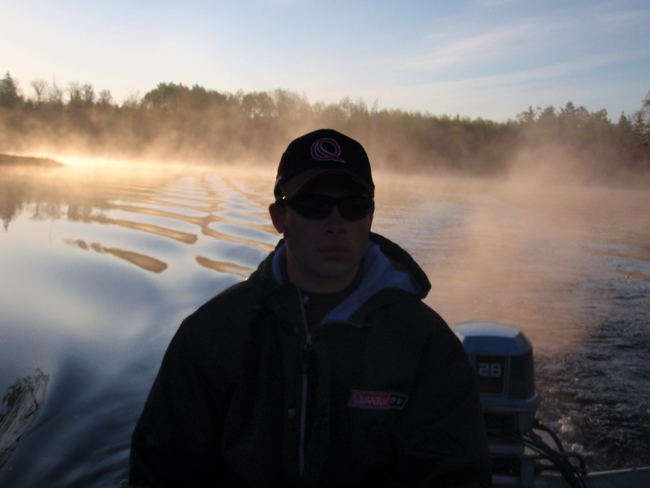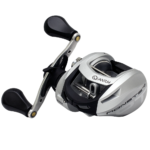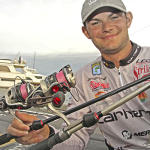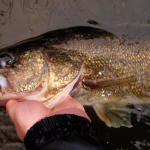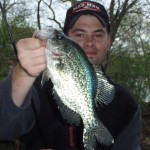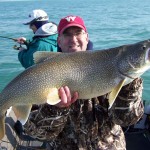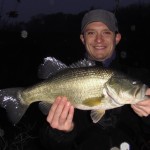By: Andrew Ragas
Learning to fish a new, unfamiliar body of water is an intimidating task. Most fishermen endure these challenges whether it’s fishing for tournaments, guiding, or leisure. As one who frequently fishes new lakes throughout the Upper Midwest each year and loves to explore, learning to fish them isn’t as difficult as it seems. It’s actually become a routine that has led to exceptional results and has turned me into a better, more-rounded angler.

Imagine being able to fish every day, spending as much time on the water as you desire. Some folks are privileged to do this while others aren’t. In a perfect world this would be possible for everyone. It’s too bad that time is such a valuable commodity. Although time is one of the best resources available for learning to fish new lakes, most dedicated fishermen are unwilling to utilize it. As good as it sounds, time is an impractical option. Those who fish new lakes want immediate results, and sometimes time cannot guarantee it.
With the advent of new and advanced technologies such as down and side imaging sonars, and incredibly accurate GPS mapping systems and chart-plotting, the process of learning new lakes has become greatly simplified. In addition to technologies and the learning curves they bring, we currently live in an information age in which we have access to published information that can be found both online and in print. This information includes contour maps, surveys, articles, and more. The availability of technology and published resources makes learning a new lake faster and easier than ever imagined.
Each year I am inundated with inquiries from friends and other anglers who have never taken it upon themselves to learn how to fish new lakes, and who simply don’t know where to begin. “What do you do to successfully fish new lakes?” they ask. This is a complicated answer, with several different parts, and involves fitting the puzzle pieces together.

Research: Do Homework
In order to learn a new lake, anglers must be willing to do some homework. This involves research and information gathering.
Remember when you were in college and likely spent hours gathering research in order to help support your thesis for completing a big term paper? As unique as it seems, doing your research for fishing is very similar and can be just as complicated. Only it is more fun, involves the science of locating fish, and requires significantly less time.
Learning to fish a new lake heavily involves researching the lake’s ecological make-up. This includes its topography, fishery, and history. The first thing to know is its type of water. For instance, is it a reservoir or a natural lake? Next, determine its lake type. Is it a eutrophic, mesotrophic, or oligotrophic lake? Finally, look into its fishery, especially population size and stocking information. Determine its abundant species and what their average and trophy sizes are.
When I do my research on a particular lake, I like to do my homework weeks before the trip is scheduled. This gives me ample time to know everything that needs to be known about the particular place I will fish. For instance, I typically use the internet for looking up fishing reports and reviews, fish stocking summaries, and angling history. I may even call the local bait shops, guides, and other experienced anglers if I personally know them. In addition, I utilize any accessible maps that may aid in navigation and public access. These include topographic downloads supplied by the DNR as well as a gazetteer. In addition to internet and maps, I also have a propensity to purchase lake profile booklets that are often compiled by professional guides, and produced by mapping software companies.
By having an idea of the lake’s make up and composition, you will have insight as to what the lake’s topography is and the type of fishery it may comprise. This preliminary research is invaluable, and is the first piece of the puzzle.

Topography: Reading Contours
Understanding topography or the structure of the lake is the second phase. In order to be successful at picking apart a new lake you must be good at map reading. The most common maps used for fishing and navigation are topographic and hydrographic maps that display contours, depths, and cover.
A good map reader is one who can follow contours and has an excellent sense of direction without the aid of a compass or GPS. Factors that determine a good map reader are the understanding of underwater structure, deciphering shallow from deep water environments, locating sharp breaks, and positioning the boat at specific locations that are shown on the map. Being able to comprehend a lake map and visualize its composition will give you a tour of the lake, and make you a much better angler.
As an angler whose boat isn’t equipped with the finest available technologies or GPS mapping, I rely on my contour reading exclusively through map print-outs and what’s in my photographic memory and what I can visualize. I must admit, having everything I need in my head is a talent.
When researching the topography of a new lake, I use as many different maps I can obtain of each lake. Examples are DNR downloads, store purchased, or hand-drawn maps whether it be mine or a guides. Despite being of the same lake, I advise on using as many maps as possible because all are recorded and detailed differently.

Ecology: Understanding the Lake
Once research is conducted and information is gathered, it’s time to dissect everything that comprises the lake that will be fished.
Some questions to ponder about your lake of choice could be the following:
- What are its acreage and maximum/mean depths?
- Is there a fishable population of targeted species (in our case, bass)?
- What species of fish is the lake being managed for?
- Is the fish population stocked or naturally-reproducing?
- What are its forage species?
- Does the lake have public access?
- What is its water clarity?
- What are its primary sources of fish habitat and cover?
- What lake type is it, and what bottom types does it have?
Having an understanding for the ecology and overall complexion of the lake ultimately prepares anglers for what should be expected. Once the facts are known, it’s time to adequately gear up and head to the lake.

On the Water Lessons
The drive en route to the new lake and acquainting myself with its boat landing is what I always look forward to. Since it’s an adrenaline rush, who needs an early morning cup of coffee? I always get excited over the fact of fishing new, unfamiliar waters. All the homework and research that has been done has ultimately prepared me for this point.
Once the boat is unloaded and in the water, you must be willing to temporarily put down the fishing rods and explore with the boat’s electronics and a good lake map. When out on the lake for the first time, it is important to learn how to navigate your way around the lake, and to pay close attention to the areas that were narrowed down from all the research that was done.

No matter how good the best fishermen in the world are, no one can learn a new body of water within a day. It is physically and mentally impossible. On most lakes, it requires days, if not weeks, to acquire the most elementary understanding of its layout and dynamics.
I have a unique routine when it comes to exploring the lake and getting a feel for it. Regardless of size, whether it is a small 100 acre lake or a large several thousand acre lake, I always break the lake down into sections on my map and immediately head towards its likely high-percentage areas that correlate best to fish movements and the specific time of year I am fishing. This eliminates the chances of wasting precious fishing time on unproductive areas and dead water. Depending on the lake’s acreage, I like to dedicate as little as 15 minutes to as much as an hour by motoring around the lake to see what it may have to offer.
I often begin by slowly cruising along the shorelines, paying close attention to my sonar in observing the depths, and where the drop-offs, bottom gradients, and contours are in relation to my maps. In addition, I will also look for man-made cover such as piers, boat slips, and any natural cover such as downed wood, rocks, and weedbeds. Finally, I will look for humps and bars if present on the lake. These are all high percentage areas that are likely to hold fish throughout the season. While exploring the lake, attention to detail is critical. Always observe transitions such as changes in the bottom composition, weed growth, and the shorelines. In addition, see where other people are fishing and check your maps to see what types of structure and area they are on.
Following the tour of the lake, reviewing everything it has to offer and eliminating the non-productive areas, it’s time to finally break out the rods and fish. Return to the areas that exhibited potential, located fish, and put all your information and research into use by catching them. Begin by fishing with search lures such as spinnerbaits, crankbaits, jerkbaits, and anything else that will allow timely water coverage. If the fish are there, search lures will usually lead to immediate results and generate conclusions. Once fish are caught, and their behaviors are observed, then a pattern is established and it becomes suitable to then fish with precise applications.
Learning to fish a new lake and being able to catch fish from it will not make you an instant expert. However, if you follow these steps, I guarantee that it will make you a better fisherman, teach you self-confidence, and lessen the reliance that is put on guides and other anglers. It takes a lot of studying, effort, and time on the water to learn a lake’s dynamics and how to fish it. But when all can be successfully done by an angler individually, the task of learning a new lake becomes worth it and will add to the repertoire of angling accomplishments.



